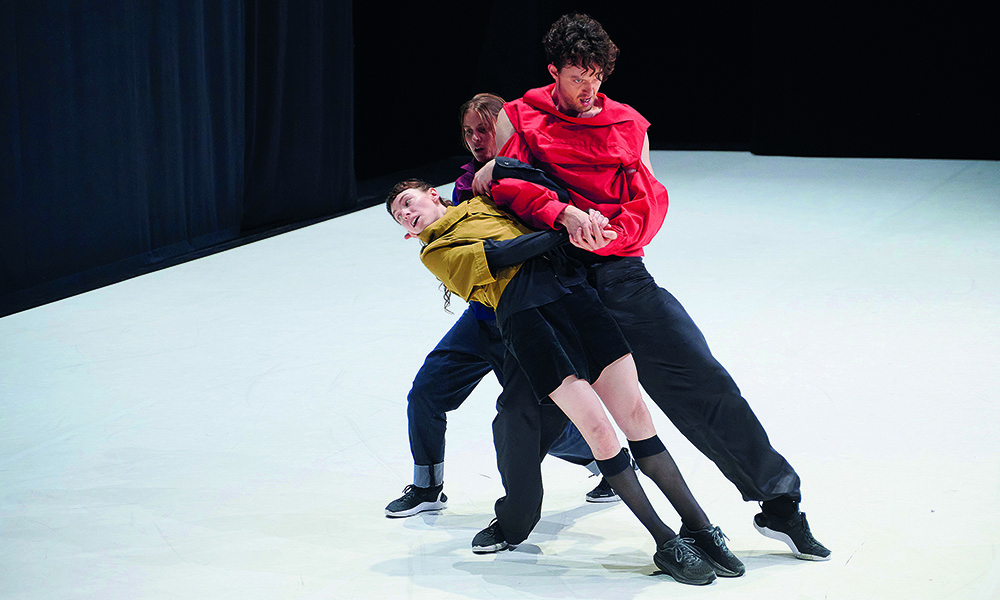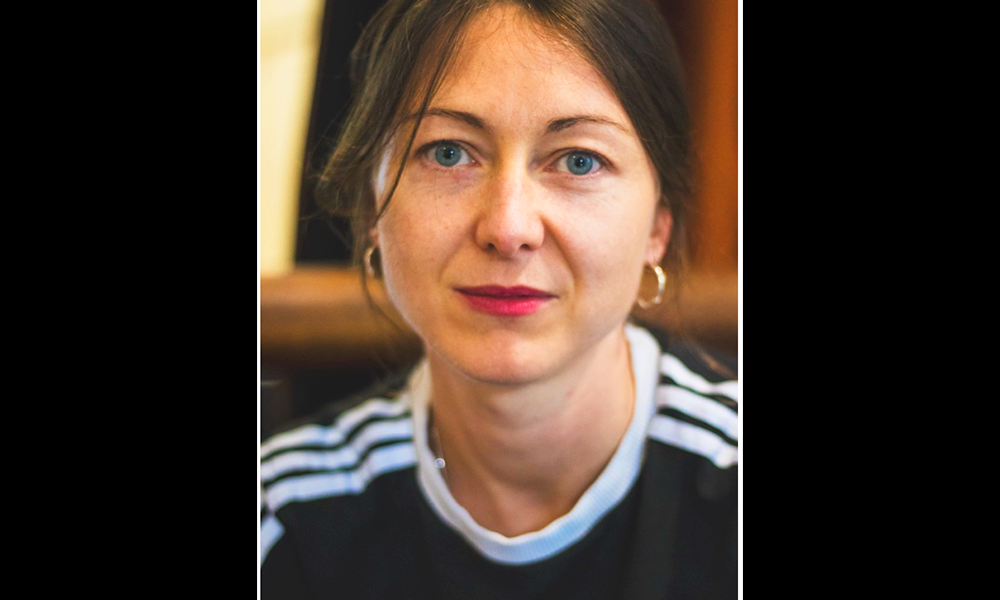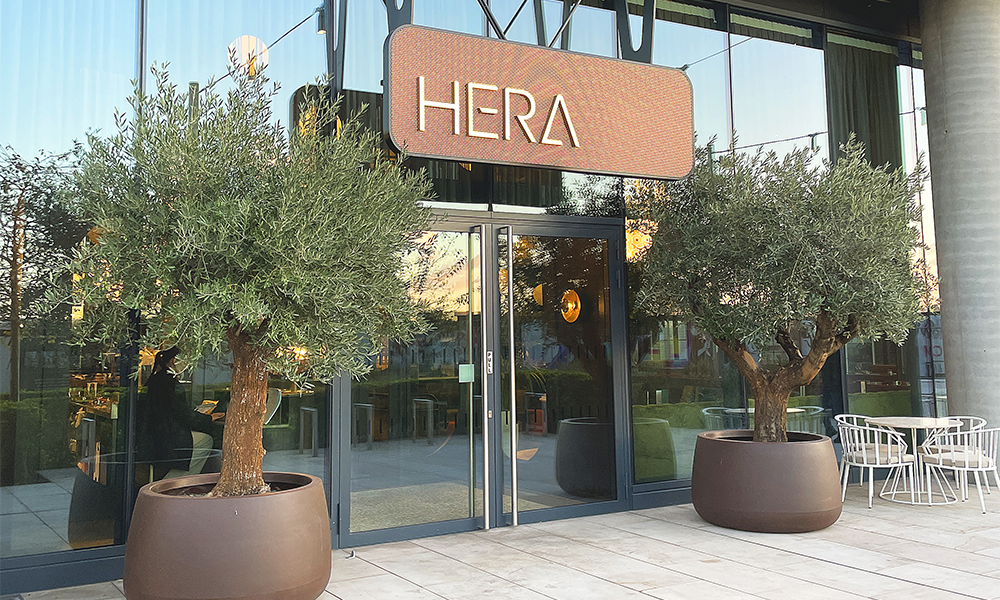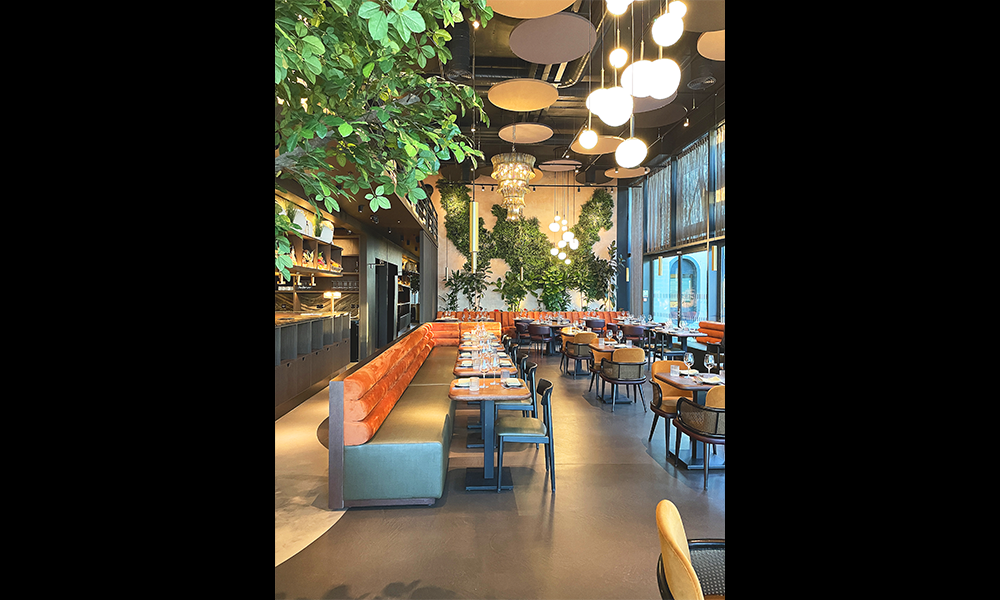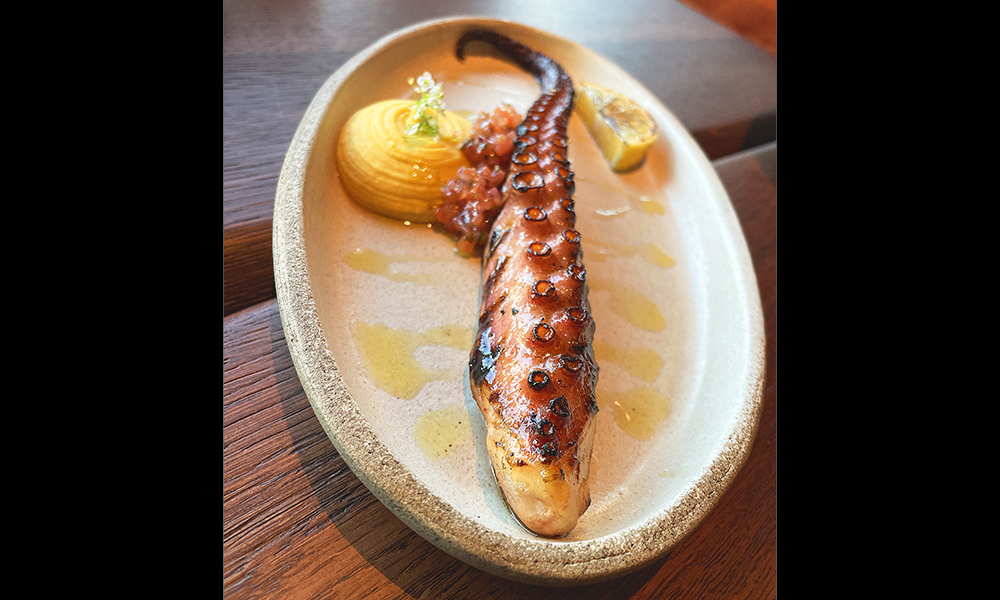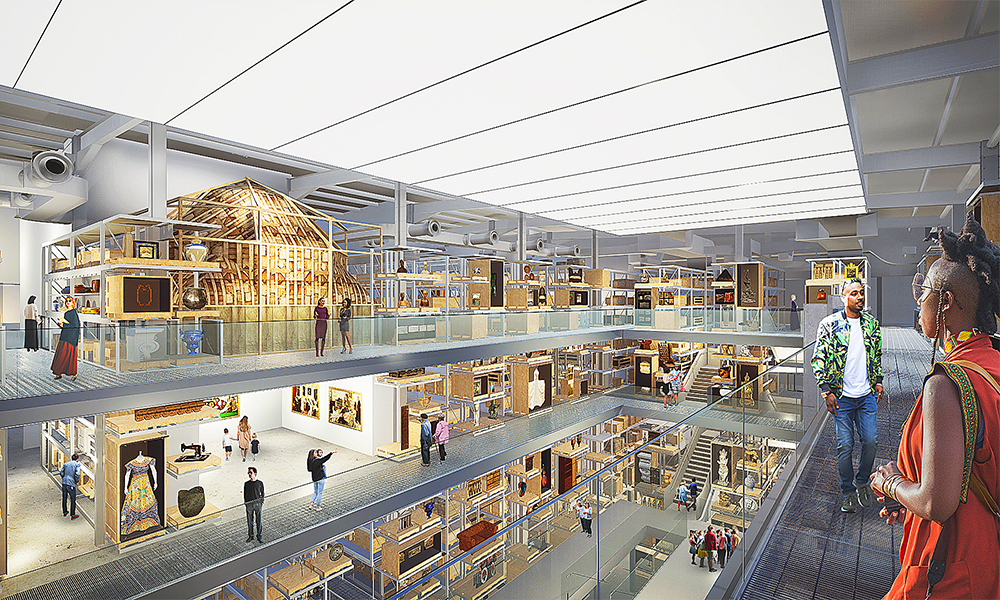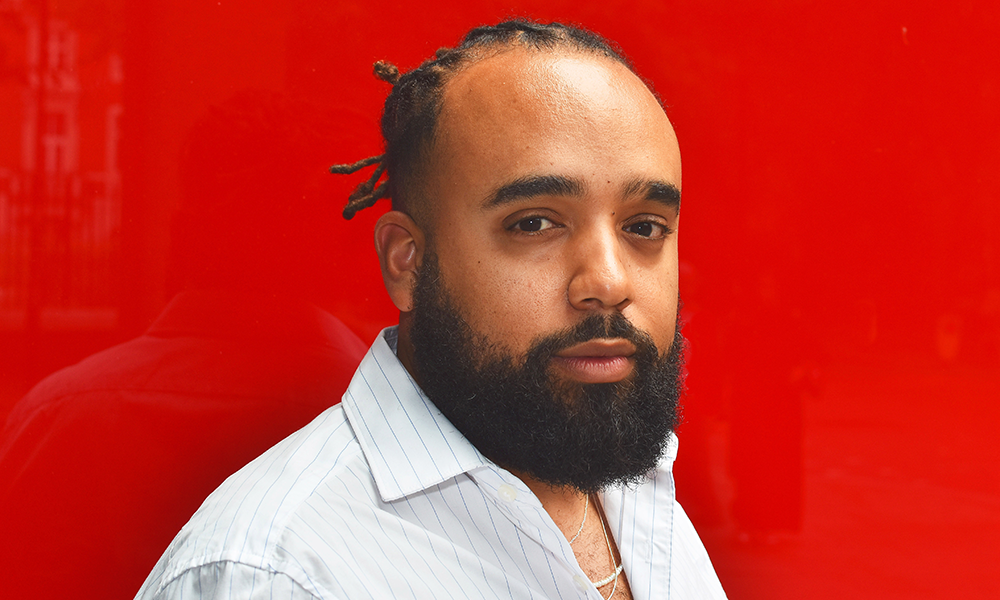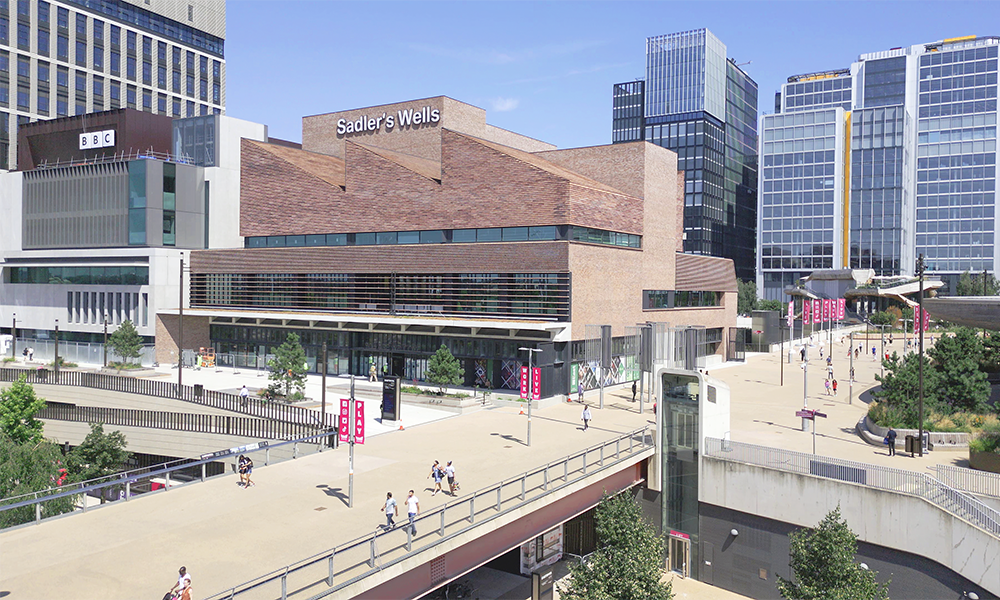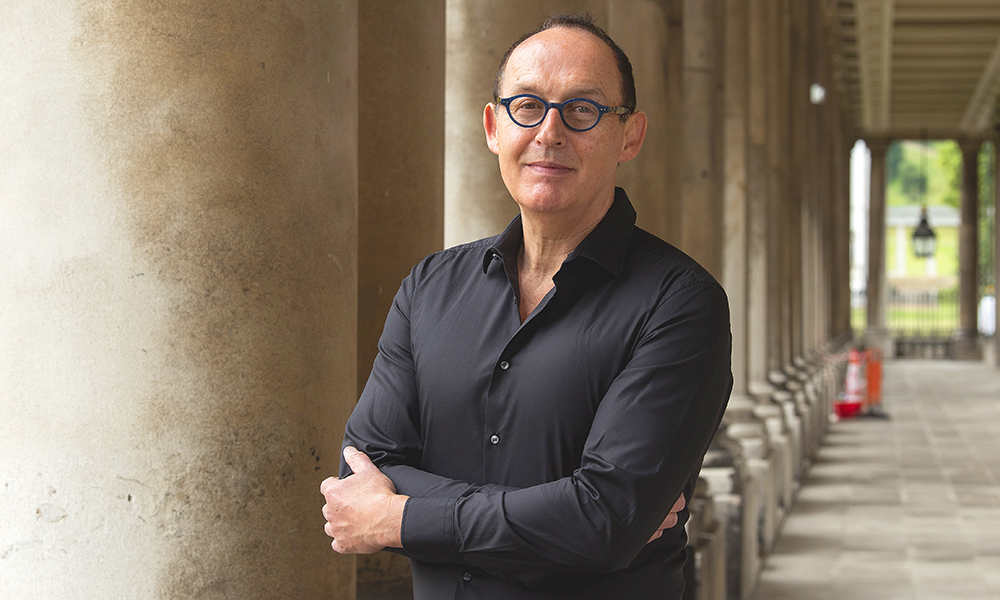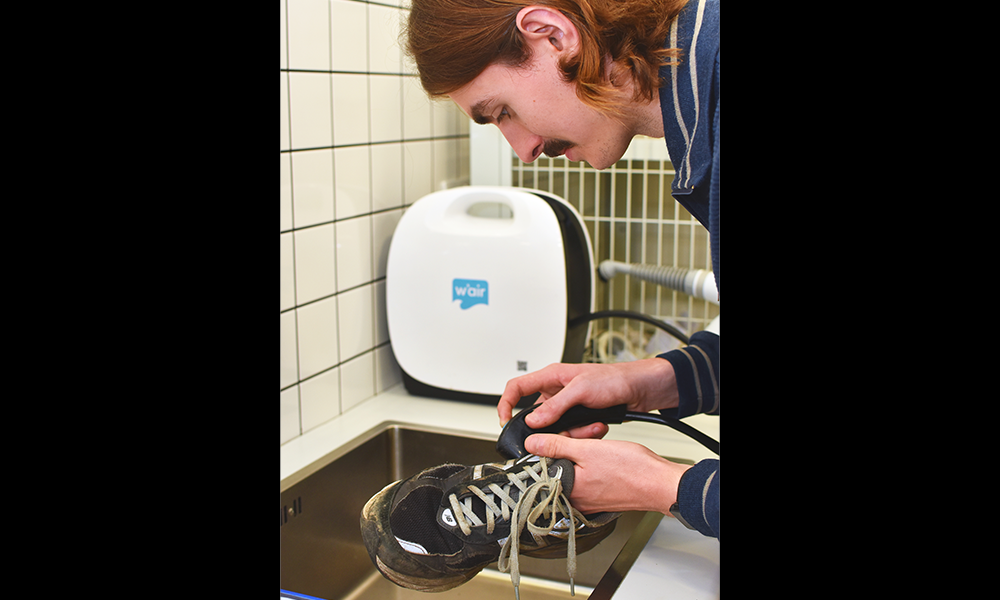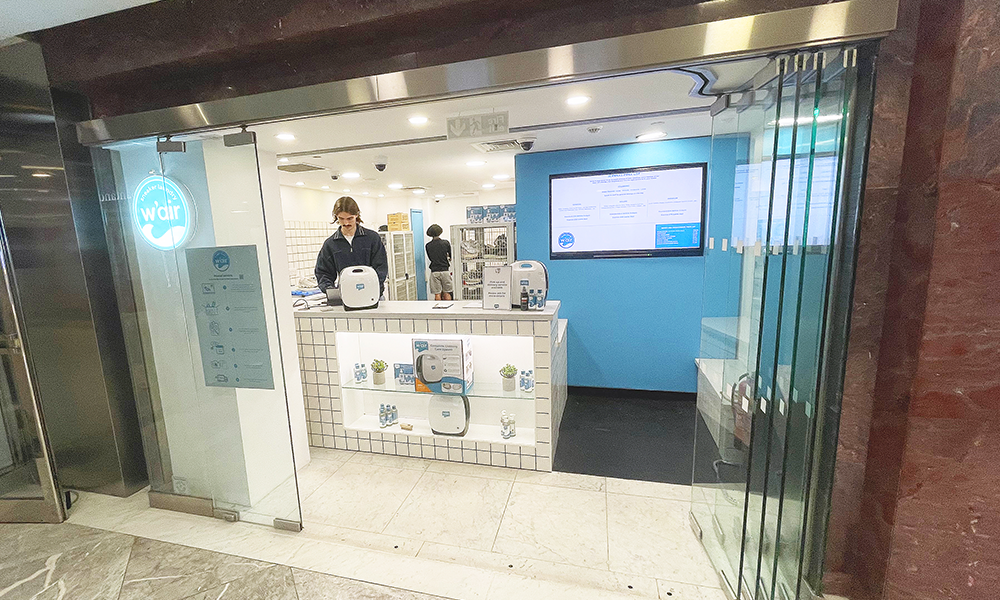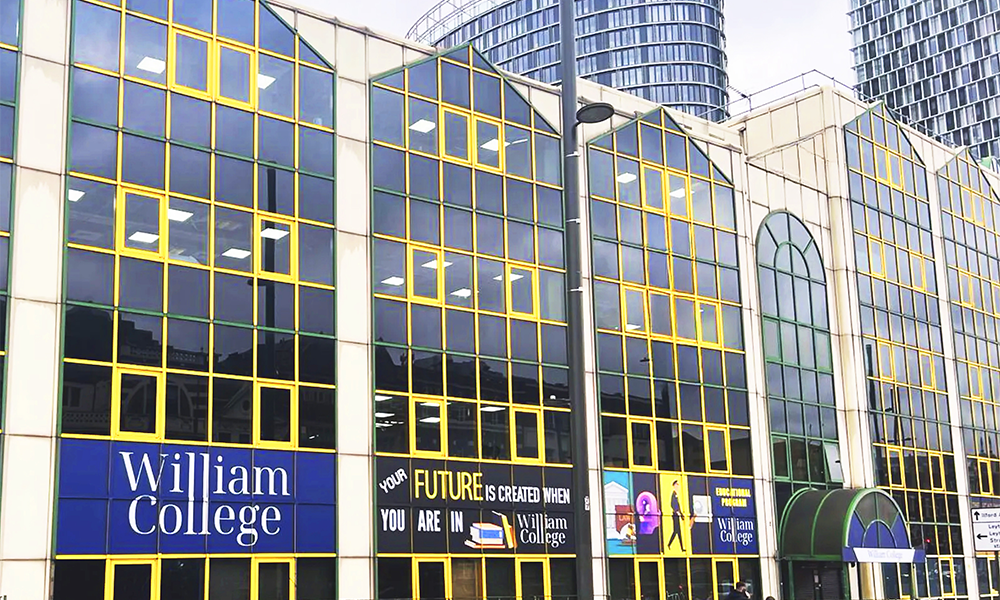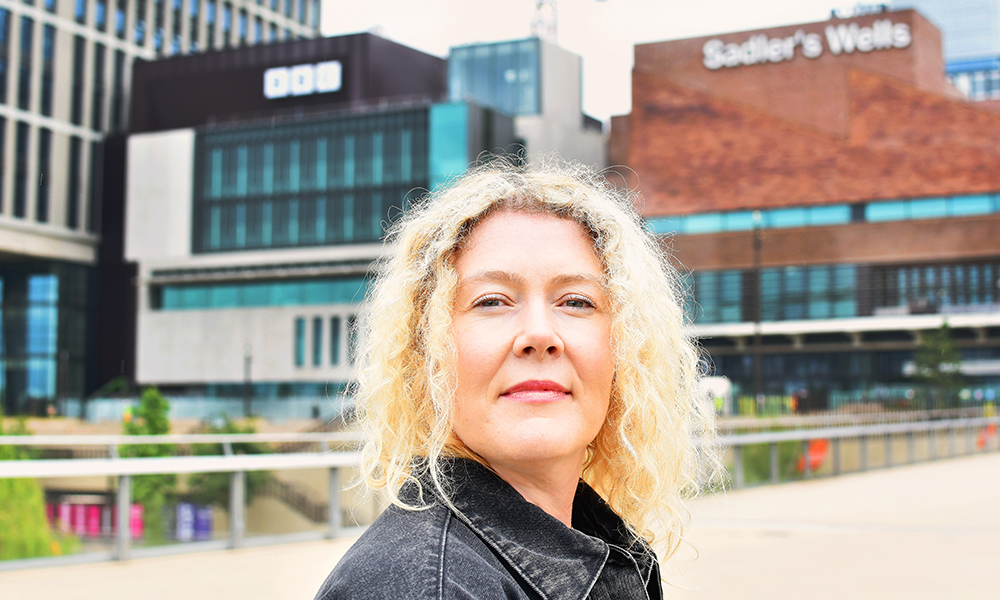Art installation as part of UCL East Marshgate’s A Place Of Our Making exhibition connects community, water and art at East Bank in Stratford

Subscribe to our free Wharf Whispers newsletter here
The public is invited to UCL East Marshgate – the university’s Queen Elizabeth Olympic Park campus that forms one fifth of East Bank – over the next few weeks to experience five installations.
A Place Of Our Making: A Multisensory Exhibition About East London showcases the work of five partnerships between artists and UCL researchers, who have collaborated with east London residents for a project aimed at exploring ways to improve the lives of those in this part of the capital.
Free to view and experience, visitors can shake the hand of a seven-foot puppet and smell a bagel brick, amongst many other sensory wonders.
The installations have been created through UCL’s Trellis programme, which pairs up academics and creatives.
The breadth and scope of this fifth iteration of the scheme is too great to be comprehensive here, so instead we sat down with artist Laura Copsey, who teamed up with associate professor of palliative medicine in the Marie Curie Palliative Care Research Department at UCLH, Sarah Yardley, to create Rewilding Healthcare.
Central to their collaboration is water and its use as a metaphor for patients and those working in the care sector.
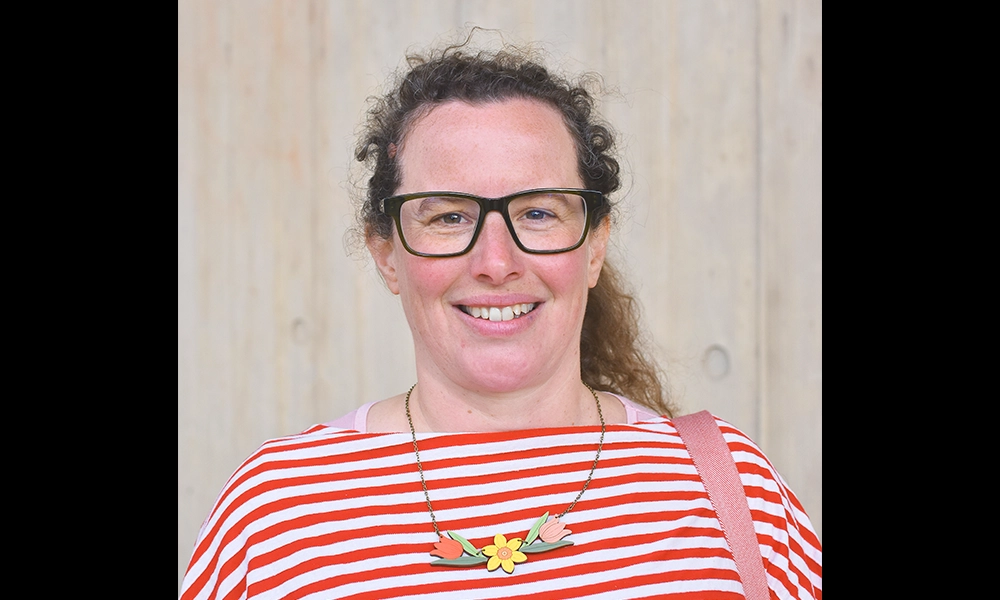
Rewilding Healthcare: an investigation
“I’m always trying to investigate how we can make things better for people by being authentic and meeting people’s needs,” said Sarah.
“My research is about gaps between expectation and experience.
“When we were sounding out ideas with each other, we discovered we both had a love of sailing and all things maritime and nautical – the project really progressed from there.
“I am a sailor, but the metaphor came from some of my research – a study on how we conceptualise ideas of safety, risk of harm and what success looks like for people who needed palliative care and those with severe mental illness.
“Through that work, I interviewed and observed many sides of the healthcare system and I brought the study to Laura.
“Carers would talk about uncharted waters and stormy seas, while patients would talk about how it was impossible to navigate the system.”
Laura said: “We found common ground straight away because the work I do as an artist is generally very watery.
“I grew up with my dad who used to run a ferry on the River Deben.
“I describe myself as an illustrator of stories, but my pieces don’t tend to look like things people usually think of when they hear the word illustration.
“They’re more like a collection of objects that communicate meaning.
“You could call it a disembodied comic with lots of different fragments. I call it ‘hydro-fiction’.”

a multitude of metaphors
In the case of Rewilding Healthcare, the display includes images in portholes circled with rope, sewn flags and a fabric map suspended from sections of a boat’s mast, a reimagining of the Shipping Forecast, a specially created newspaper, an altered life preserver and even postcards for viewers to express their thoughts.
All have been made through collaborative workshops at ecological regeneration project Cody Dock, just down the Lea from UCL East Marshgate.
“We ran sessions monthly, each with a different theme,” said Laura.
“They were aimed at trying to start conversations about health based on Sarah’s research.
“We sewed to make signal flags, created boats, made collage, drew and took photographs.
“It was an experiment to see what sorts of activities would generate conversations – it turned out that pretty much all of them did.
“What people will see in our part of the exhibition are things you would associate with safety, but layered with new meaning or made to look a bit unusual.
“I hope our audience will see them as familiar, but then ask why they’re presented in this new way and what that could mean.
“Much of the work is subtle or works on multiple levels – waiting room chairs upholstered to look like rocks, for example.”

sparking conversations
Laura and Sarah had help from playground creator and APE director, John O’Driscoll, who is based at Cody Dock and supplied nautical props to assist with the project – helping make the maritime metaphors flesh.
“We were surprised from the very first workshop to see how the symbolism all this stuff – buoys, fenders, anchors – had with regard to people’s experience of healthcare,” said Laura.
“The conversation was rich. Initially I thought the experiment would be hard, but people got it immediately.”
Sarah added: “There were about 45 participants in total – some dropped in and out and around 10 were with us from start to finish.
“There are many layers and metaphors in what we’ve created together.
“Using nautical and maritime language expresses something about healthcare systems in a different way and we hope that this will allow people to open up and express what they think about their own experiences.
“All the way along, people have said to us that these are difficult conversations, which can be distressing, but we absolutely need to have them.
“For some people, Rewilding Healthcare might carry a really personal meaning, but for others – including medical colleagues – it could be to ask themselves what they can do to create the meaning people are looking for.
“When we do a workshop, I say to people, imagine we’re a lifeboat crew and we’re all together.
“On an island – and thinking about archipelagos has been a big part of the project – if the sirens go off, we’re all part of the crew.
“Sometimes you’ll be the person needing to be rescued, sometimes you’ll be the rescuer, but it will create a real dialogue.”
Laura added: “There are so many parallels between sailing a boat and healthcare. You have to work together and you need people with different skills, but you’re also at sea and you can’t control the weather.
“There are risks, but it’s often positive risk-taking.”
key details: Rewilding Healthcare at UCL East
A Place Of Our Making: A Multisensory Exhibition About East London features Rewilding Healthcare and is on show at UCL East Marshgate until April 13, 2025.
The show is open from 10am-6pm daily and is free to visit. The exhibition is also open until 8pm on Thursdays.
A series of workshops are set to be held focused on specific exhibits.
Find out more about the exhibition and events here
Read more: How Green Pioneer could be the future of decarbonised shipping






